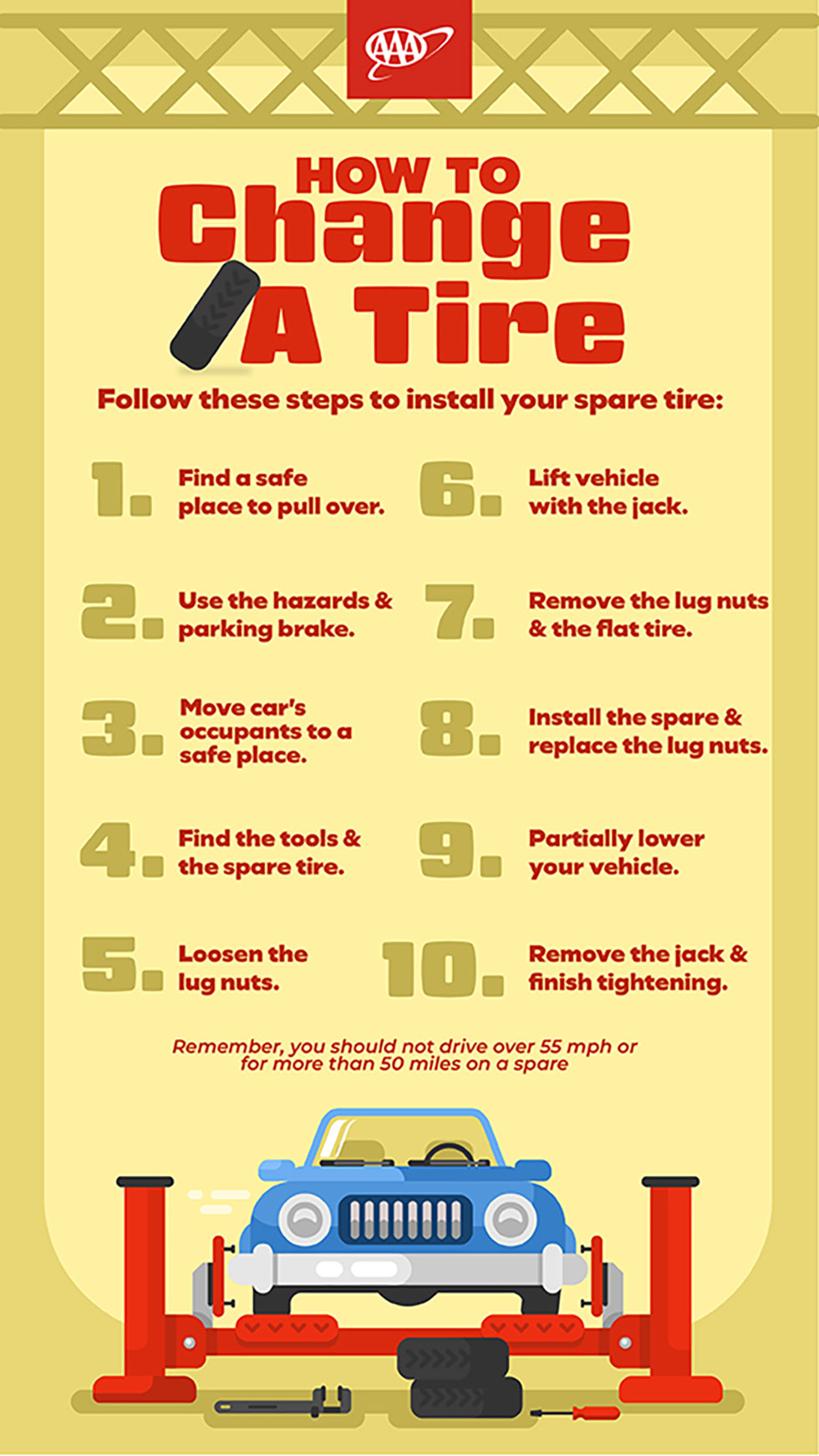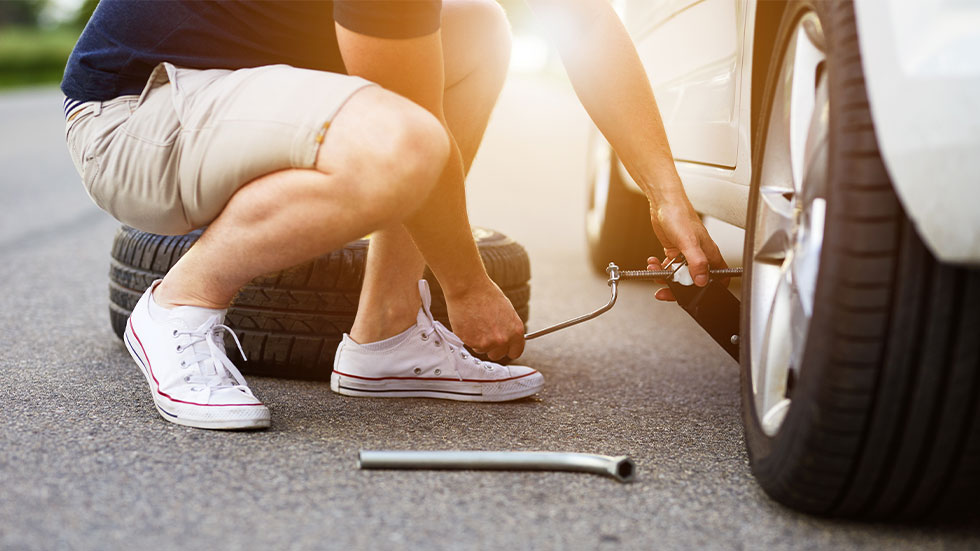How to Change a Tire
10 easy steps to change a tire, plus information on your spare tire and the tools you’ll need



Although you may be a AAA Member or drive a vehicle that doesn't include a spare tire, it never hurts to learn the proper way to change a tire, just in case. So, before you head out on that road trip or daily commute, why not take a few moments to familiarize yourself with the steps it takes to change a flat tire? In this article, we will look at some things you should keep in mind and show you the right way to install a spare so that you can get back on the road again safely.

1. FIND A SAFE PLACE TO PULL OVER
Experiencing a flat tire or blowout while driving can be an incredibly stressful experience, particularly if your vehicle is moving quickly. The most important thing to remember is to keep calm and pull the vehicle over as far as you can, out of the flow of traffic. If possible, search for solid, flat ground to reduce the chances your vehicle will roll.
2. USE HAZARDS & PARKING BRAKE
Turn on your hazard lights and engage the parking brake once the vehicle is stopped. This will help keep it from rolling unexpectedly.
3. CHECK ON OCCUPANTS AND GET THEM TO SAFETY
Once stopped and parked, check with any occupants to ensure they are OK. Have them unbuckle seat belts and move them to safety, away from the vehicle and traffic.
4. FIND TOOLS & SPARE TIRE
If you are having trouble locating your spare, check the owner's manual. To properly change a flat tire, you will need a jack, lug nut wrench, and properly-inflated spare tire. If you have them, gloves, a tire gauge, and flashlight may come in handy as well.
5. LOOSEN LUG NUTS
With the vehicle still resting on the ground, use your wrench to loosen each lug nut on the wheel until you can spin them with your fingers. You may need to remove a hubcap to access the lug nuts. You want to do this while your vehicle is still on the ground because trying to loosen them while it is raised and resting on a jack could cause it to fall off.

6. LIFT VEHICLE WITH JACK
Jack points will be located under each side of your vehicle and can be found by sight or in your owner's manual. Usually they are notched tabs, but the most important thing is to be sure the jack is pushing into the frame of the vehicle itself versus a piece of flimsy bodywork or ground effects. Not only will this protect the bodywork, but it will ensure the vehicle stays stable while you install the new tire.
7. REMOVE LUG NUTS & FLAT TIRE
Finish loosening and removing each lug nut until you can pull the entire wheel off your vehicle. Be sure lug nuts are stored somewhere they will not roll away or be lost, like a hub cap if you have it.
8. INSTALL SPARE TIRE & REPLACE LUG NUTS
Place the spare tire onto the bolts and re-install the lug nuts one by one. It is important that you thread and tighten the nuts using only your fingers. This will prevent you from cross-threading and damaging the wheel assembly. Lug nuts should be finger tight before moving to the next step.

9. PARTIALLY LOWER YOUR VEHICLE
Slowly lower the jack until your spare tire is resting on the ground, but not supporting the full weight of your vehicle. This will keep the wheel from rolling while you tighten the lug nuts with your wrench. It is important that you tighten the bolts in increments using a star pattern (every other bolt). Tightening in this manner will ensure the wheel is evenly seated onto the rotor and will spin straight. Alternate tightening bolts in increments until they feel equally tight.
10. REMOVE JACK AND FINISH TIGHTENING
Lower your vehicle fully and remove the jack, allowing its full weight to rest on the newly installed spare tire. Again, in a star-shaped pattern, tighten the lug nuts until they feel fully and evenly tightened.
Congratulations! You have just successfully changed a flat tire. Now all that is left to do is gather up your tools, throw your flat in the trunk, and be on your way. It is also a good idea to check the pressure in your spare tire if you haven’t done so. If you are driving on a donut or spare that's less than full size, it is best to get to your trusted mechanic as quickly as possible to have the flat tire repaired or replaced. Donuts are temporary tires not meant to be driven more than fifty miles or fifty-five miles per hour.
